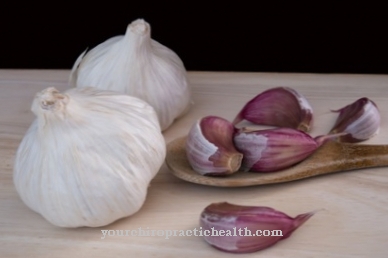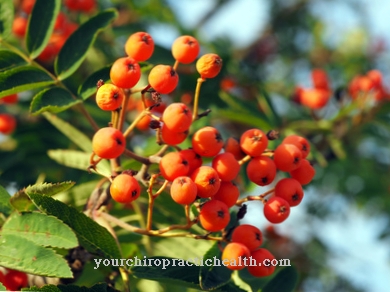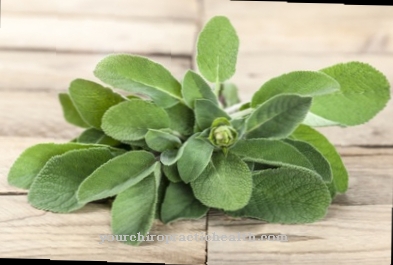Certain medical conditions do not always require treatment with chemical medication. There are also numerous herbal elements with individual properties. In the category, for example, is the Turmeric root to call.
Occurrence & cultivation of turmeric

Most people know turmeric only as a tasty spice from the kitchen. It gives the conventional curry powder its intense color. If you are interested in turmeric, you can buy it both dried and fresh. Externally, the root is not only reminiscent of ginger, turmeric is also part of the ginger family. The taste is a bit more bitter than that of ginger. The spice originally comes from Southeast Asia.
However, turmeric is now also grown in other regions of the world, such as India. The spice is also called turmeric because of its coloring effect. The tuber itself is the root of the turmeric plant. This usually reaches a height of 1 to 2.5 meters. The leaves of the plant are reminiscent of lilies and have a yellowish hue. For further use, the tuber is doused with hot water after harvesting and then placed in the sun to dry.
In this way, the outer layer, which cannot be used for culinary or medical purposes, can be removed more easily. Dark storage in a dry environment is recommended to preserve the nutrients. Among other things, the aroma can be expected to survive for a long time. If you only want to use the tuber as a spice, you should use it sparingly. Even small amounts develop a special taste and give the dish the typical color of turmeric.
Effect & application
On the medical level, turmeric is an important remedy that can be used for numerous ailments and diseases. In recent years, many scientific studies have taken place that suggest that the spice has a far-reaching effect. Traditionally, turmeric helps with various digestive difficulties. If there are disturbances of the bile and the bile flow, the use of turmeric should be particularly efficient.
Such a phenomenon is expressed by colic-like pain in the upper abdomen and a feeling of pressure. This is quite able to radiate into the shoulder. Furthermore, biliary complaints are accompanied by nausea, a feeling of fullness and loss of appetite. Those affected suffer from the symptoms especially after eating with an increased fat content, legumes or coffee.
Turmeric has a stimulating effect on the production of bile juices. In this way digestion can be improved. The complaints mentioned are alleviated. Turmeric also supports the immune system by stimulating certain cells. These include, for example, the T lymphocytes and macrophages. Above all, the magrophages are an important component in the daily fight against invading pathogens.
The ability of turmeric to reduce cardiovascular risks and alleviate cancer diseases are considered to be important healing properties. Certain deposits are present in the arteries during a heart attack. These consist of oxidized cholesterol that is ingested from food. Turmeric can prevent oxidation so the plaques cannot develop. This lowers the cholesterol level and reduces the risk of a heart attack.
Studies have also shown that the spice can be useful as an accompanying component in cancer therapy. Treatment alone is expressly not recommended. The daily intake of a certain dosage helps to stabilize the free radicals. In addition, experiments have shown that the tuber's ingredients make the tumor grow more slowly.
Importance for health, treatment & prevention
Turmeric has several central roles in health: it can be recognized both as a therapeutic measure and as a prophylaxis. The ingredients are decisive for the effectiveness of the tuber. These include, for example, essential oils, curcurmin and dicinnamoyl methane derivatives.
Turmeric is commonly used for various digestive ailments, including increased gas formation. Turmeric can be used in different forms to have a positive effect on health. It can be integrated into the menu as a spice, for example. Here you can either use the powder or the fresh root. For medical complaints, however, it is often advisable to take tablets with the active ingredient curcurmin.
These contain far greater amounts of the ingredients than the spice. Overall, the average dosage is around 1.5 to 3 grams. This should be taken daily in several steps, ideally between meals. In this way, inflammation is inhibited, digestive problems, poor concentration and itching are alleviated, and allergies, thromboses and menstrual cramps are prevented. By stimulating the production of bile, the risk of kidney and gallstones is lower.
At the same time, turmeric can provide relief for existing stones. In summary, the properties of the root can be described as anti-inflammatory, antiviral and antibacterial. Turmeric also promises positive effects on serious diseases such as cancer and Alzheimer's. The sole therapy does not make sense, but Curcurmin can be seen as a supplement.
The tuber is thus a useful means of alternative medicine. In contrast to most chemical drugs, side effects and accompanying symptoms are usually not to be expected. Very few people experience heartburn, nausea, or diarrhea after consuming turmeric.












.jpg)



.jpg)










.jpg)
